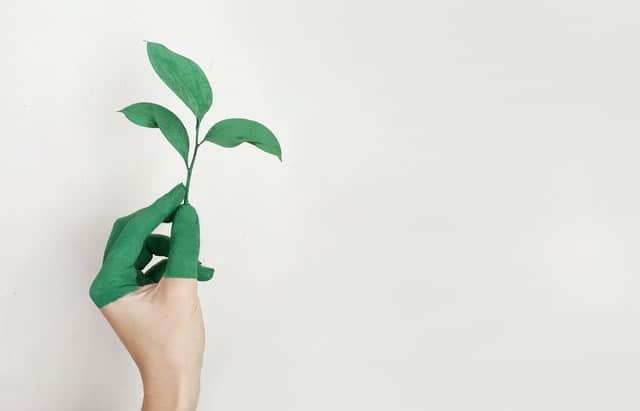Introduction
Fashion sustainability is an increasingly relevant part of the fashion industry and is becoming an academic subject of its own. Sustainability is particularly interesting, considering that it encompasses the study of a huge volume of data which relates to social sciences, technology, human rights, science and more.
In general, we could discuss sustainability on 4 standpoints: (1) social, (2) economic, (3) ecological, (4) cultural.
This makes the discussion on fashion sustainability a particularly challenging one. For the sake of simplicity and clarity in the posts dedicated to fashion sustainability, we’ll try to focus on the interconnections that can be found between academic literature, research and business practice.
In relationship to the latter perspective, we can say that the point of educating the youth in fashion sustainability is to create a sense of contingency, or better yet a sense of duty towards developing sustainable business practices. Just like doctors are required to make an oath, the same should be asked of many businessmen and women. The general principle that should be respected is that of considering that freedom is limited by equality.
As much as fashion and lifestyle is a field where we are entitled to express ourselves unconditionally, this freedom should not come at the expense of all the other players involved in the process of making and selling garments.
Over the last 20 years, the fashion industry has undergone seismic changes. Of course, fashion is a language and as such it’s in continuous evolution. Nonetheless, if we grow a more distant perspective on the industry as a whole, we can notice that there are larger movements affecting the way we experience fashion.
What are these macro-trends, and how are they reshaping the industry when it comes to its environmental impact?
- Fashion is Faster. If twenty years ago, fashion firms could safely rely on two yearly collections (FallWinter and SpringSummer), now consumers have been “spoilt” with much faster production lines, capable of offering something new and trendy every six weeks. Considering the carbon footprint, or the ‘environmental’ cost associated not only with the production but also with the disposal of garments, the polluting impact of fast fashion is second only to fossil fuels.
- New Emerging Markets. In order to provide sufficient product supplies to emerging and emerged markets, fashion firms need to create global supply chains by moving parts of their value chain to foreign countries and grow closer to their target markets. Globalization can be also pursued to access financial benefits or cost reductions. This trend has causes sustainability concerns for both the heightened environmental impact of global transport as well as for social equity factors, related to employees’ working conditions in countries with looser labour and safety regulations.
- A Highly Competitive Market. As digital technologies have completely reshaped the world of business, creating a brand has never been so affordable. For many companies, the development of an attractive brand, paired with a persuasive web presence can be enough to seize a segment of the market, with much less focus on the production pipeline of a garment, often disregarding the quality of the materials used and their production impact.
There are moreover some additional trends which are not only affecting the global business landscape as a whole but the fashion industry in particular:
- Population Growth. Even if products are more sustainable the volume of production can impact the environment even more profoundly.
- Lifestyle Change. The pace of our lives has become faster, and so have fashion trends.
- Urbanization. Urbanization is a carrier of some of the largest inequalities.
- Digital revolutions. This refers both to AI and work automation.
This is also, without considering climate change. We should not give in to a bleak vision of the world but on the contrary, we should acknowledge the important shift which is taking place in a variety of fields, making the environment a priority.
Keeping ourselves on the bright side, however, fashion is a creative industry, and as such is capable of re-inventing itself, transforming this environmental crisis into an opportunity to re-shape the industry. In this article, we are going to clarify what are the implications of managing a sustainable fashion firm and in what ways a firm can develop its production processes to lighten their carbon footprint and impact upon human health.
- What is sustainability, and why should I care?
- Sustainability is about creativity.
- Sustainability is about effective management.
- Conclusions.
1. What is sustainability, and why should I care?
In a sentence: you should care because your customers care. If we look at consumer behaviour, we see how the trajectories followed by the fashion firms are often linked to the conduct of their target customers. Sustainability has become an integral part of CSR, or Corporate Social Responsibility strategies, whereby companies, to maintain customer loyalty are required to observe the principle of the triple bottom line. If twenty years ago companies were only thinking about one bottom line, – their profitability – now two more factors are part of a firm’s strategy: its environmental impact and its social equity.
This is why when we talk about sustainability we need to consider more than one dimension:
- Sustainable Profit. We have to bear in mind that any change in company strategy should be carried out while maintaining profitability. With no economic incentive, it’s hard to bring lasting change. Luckily the business case for sustainability has been already established, as those companies who started showing sensitivity to the environment have always been rewarded by their customers’ loyalty. Other firms have gone above and beyond in creating brand positioning strategies which were able to fully leverage the evolution of consumerism towards new strands of essentialism and minimalism.Sustainable profit, therefore, means that companies should grow and prosper, but as a result of their ability to create circular economies and by giving back the value they receive in socially equitable ways.
- Sustainable Environment. This type of sustainability is the one we mostly refer to in ordinary language. Fashion production can involve a high variety of chemicals and dyes which cause harm to the ecosystem; highly refined products have an environmental cost which is not comparable to a garment’s retail price. This problem, however, does not only involve firms. The water and energy cost of excessive washing or clothing replacement is a fashion sustainability problem nonetheless, one which can be treated and changed by creating new categories of products capable of influencing consumer behaviour and perception of ‘cleanliness’.
- Sustainable Labour. This typology of sustainability relates to the working conditions of a firm’s employees. Because of offshoring and outsourcing programs firms seem to have lost managerial accountability concerning the work conditions they are providing to their employees. This behaviour has created two types of problems; firstly, this approach has profoundly impacted the financial circumstances of the communities around manufacturing plants. These communities are living in a system which prevents their growth and economic development. Secondly, corporate disregard for exposure to toxic dyes and other byproducts of fashion manufacturing has impaired the safety conditions of the workers and has ignited many anti-consumerism movements, pressuring corporations to move towards more socially equitable practices.
At this stage, after having attempted to define the problem, we can see what types of design and management approaches are possible to address these issues. The fashion industry has two souls: a creative soul and a business soul; in this post, we’ll discuss how both ends of a fashion company can pursue sustainability.
2. Sustainability is about creativity.
A lot can be done at any stage of business development, but it’s clear that setting up virtuous cycles during the startup stage of a company is a much more effective way to address sustainability.
We often tend to associate designers with a very ‘focused’ typology of creativity, one which can only be put to use when designing clothes. This is a very limiting perspective: so much can be done by thinking innovatively about the complete lifecycle of a fashion garment.
As a designer builds a brand, being able to insert new, sustainable practices in the way the collections are created allows for many typologies of experiments: trying and sampling new materials, using new cutting techniques, applying new stitching and finishing processes is part of a process of research that is at the heart of fashion design. Whatever a designer is able to “do differently” can impact the product’s looks and environmental cost, differentiating it from its competition.
In fashion, a brand is often the reflection of the designer’s personality. A designer should develop a brand by looking introspectively within himherself and realising what are the traits and values that matter the most to himher. These values are usually the ones that were absorbed during a designer’s upbringing. These values constitute the DNA of the designer’s style and will be stored in every item produced. Embedding sustainable values into a product’s DNA will allow the designer to observe virtuous habits throughout the firm’s life.
Once these values have been identified and embedded into a brand, making sustainable products is the next logical goal. There are so many practical things that can be done, that it’s only through the lens of self-awareness that a designer can pick the ones which are better aligned with a collection and its values. To acquire a comprehensive perspective of the many options available, we recommend looking at the Ecodesign Strategy Wheel. Not all strategies can be adopted at once, and this is why choices need to be made.
3. Sustainability is about effective management.
Sustainability is not only about the product, but it’s also the business model a firm is pursuing. Instead of looking at the product, we can look at the processes that regulate business operations. A business model is, simply put, the internal business logic your firm is following. As we have seen in recent years, the growth of share economies are a clear sign that business modelling in fashion is in a stage of evolution, where the very concept of ownership is challenged.
As a manager, you can look at workflows within your company and see how you can optimise the processes your products undergo. From a strictly managerial perspective, a product undergoes four key stages before reaching the end customer: research and development, production, marketing, distributionsales. This model is what in business is commonly defined as the ‘simplified value chain’. The value chain comprises a list of processes and interdependencies which add value to the final production output of a firm.
For each of these four segments, there may be trade-offs: not all sustainability strategies can be followed at once. For instance, optimising the durability of a product so that it may last longer, will generate higher production costs in terms of resources and manufacturing.
Many sustainability decisions can be made in terms of managing efficient transportation systems within the company’s facilities and out to the final customer. Transportation is a very relevant area of intervention, considering that global supply chains impact a firm’s carbon footprint very profoundly. Nonetheless, if a firm is not yet in the stage of developing a global supply chain strategy, there are still a lot of things that can be done.
For instance, choosing to create partnerships with fair-trade-certified companies can go a long way. As a fashion manager builds and fosters business relationships with a variety of stakeholders, deciding to invest in fair-trade partnerships is an effective way to show a solid intent to develop environmentally sensitive policies.
Moreover, if we look at the impact that managers have as they work towards building a company, we can take into account the influence senior management has over the development of company culture and how employees will perceive the importance of the cause for a healthier environment.
4. Conclusions
In this first section, our goal was to clarify that sustainability cannot be discussed in general terms; it needs to be perceived as an action plan to create better fashion companies. Inevitably, each of us will be able to see in sustainability the expression of social and environmental values, but the matter is now beyond this stage.
Sustainability is about implementing change. For each segment of your production pipeline, there are several practical things a firm can do to lower the environmental footprint of the firm.
Many brands are spearheading new initiatives to show how even small changes can have long-lasting impacts- By creating new production strategies and by challenging our behaviour, sustainable brands are making us consume less and experience more.







